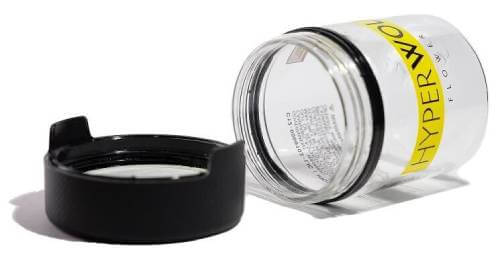Purple Haze products near you

No Products Found
Welcome to our comprehensive guide on Purple Haze, one of the most iconic sativa-dominant hybrid strains in the industry.
This strain boasts a rich history and a prestigious genetic lineage, tracing its roots back to classic varieties like Haze and Purple Thai. Over the years, it's captivated users with its unique blend of euphoric and energizing effects, quickly making it a favorite among cannabis enthusiasts around the globe.
In this guide, we'll dive into the details of Purple Haze's aroma, flavor, effects, and cultivation. Join us as we explore everything this remarkable strain has to offer, and keep reading to discover why Purple Haze might just be the next addition to your cannabis collection.
What is the THC Percentage of Purple Haze Strain?
The Purple Haze weed strain is known for its moderately high THC content, typically ranging between 17% and 20%. However, some especially potent phenotypes can boast THC levels as high as 25%.
It's important to note that the effects of this strain can vary based on the specific phenotype and growing conditions, so users should always start with a small amount and adjust their consumption accordingly.
What is the CBD Percentage of Purple Haze Strain?
The CBD content of the Purple Haze marijuana strain is relatively low, typically falling below 1%.
While this strain may not be the best choice for those seeking high CBD content, its balanced profile of effects and unique flavor and aroma make it a highly sought-after choice among recreational and medicinal users alike.
As always, individual experiences with cannabis can vary, so it's recommended to start low and go slow.
What Terpenes Are Found in Purple Haze Strain?
The Purple Haze marijuana strain is rich in a variety of terpenes that contribute to its distinct aroma, flavor, and effects. The most common terpenes found in this particular strain include:
- Myrcene: This is the most abundant terpene in cannabis, contributing to the herbal, musky, and earthy notes of the strain.
- Caryophyllene: Known for its spicy, peppery aroma, caryophyllene also has potential anti-inflammatory benefits.
- Pinene: As the name suggests, pinene offers a fresh, pine-like scent. It’s said to promote alertness and memory retention.
- Limonene: This terpene lends a citrusy aroma to the strain and is associated with mood-enhancing effects.
- Humulene: Humulene contributes to the woody, earthy tones in Purple Haze and may offer anti-inflammatory effects.
Remember that the exact terpene profile can vary based on the specific phenotype and growing conditions, so this list may not be exhaustive or universally applicable to all Phenotypes of Purple Haze.
Top reported effects

elevated

creative

hypnotic
Top reported flavors
Flowery
Lavender
Purple Haze Strain
Related strains
Purple Haze Strain Description
Purple Haze is a sativa-dominant strain, bursting with vibrant colors and a captivating aroma that lingers in the air.
The buds are densely packed and covered in sticky trichomes, showcasing an array of deep purples, emerald greens, and bright orange pistils.
This aesthetic appeal is matched by its aroma – an enticing mix of sweet berries and earthy undertones. On the palate, Purple Haze delights with a robust flavor of juicy grapes and subtle hints of spicy herbs.
The crowning glory of this strain, however, lies in its effects. As a sativa-leaning strain, Purple Haze provides an uplifting, cerebral high that sparks creativity and keeps you energized throughout the day. It quickly ushers in waves of euphoria, making it an ideal choice for social events and creative undertakings.
Despite its potent cerebral effects, Purple Haze also offers a soothing body high that doesn't hinder productivity, striking a harmonious balance that both recreational and medicinal users can enjoy.
A Closer Look: Purple Haze Effects
The Purple Haze marijuana strain is renowned for its swift onset of effects, beginning with a euphoric rush that clears the mind and elevates the mood. These mentally stimulating effects are often described as feeling like a 'haze' lifting, replacing any present negativity or stress with positivity and a sense of well-being. This feeling is common among many 'haze' strains.
As the mental high intensifies, users often experience an increase in creative thoughts and a heightened focus that can be harnessed for various tasks. Additionally, Purple Haze sparks a deep sense of social energy, making it the perfect strain for lively conversations and social gatherings.
On the other end of the spectrum, the strain also provides a mild body buzz. This physical effect is far from debilitating; instead, it serves to keep any jitters or hyperactivity at bay, creating an overall balanced effect. It's this fusion of invigorating cerebral effects and gentle physical relaxation that makes Purple Haze a beloved choice among both recreational and medicinal users.
Whether you're seeking inspiration for a creative project or looking to unwind after a long day without feeling lethargic, Purple Haze might just be the strain for you. But remember, everyone's experience with cannabis is unique, and what works well for one person may not work the same way for another.
A Closer Look: Purple Haze Flavor Profile
Purple Haze greets the senses with an array of enticing aromas and flavors that make every puff a delight.
The first thing you'll notice is its signature sweet and tangy fragrance, reminiscent of fresh berries and ripe grapes. This intoxicating scent sets the stage for the flavorful adventure that lies ahead.
Upon inhale, Purple Haze treats the palate to a fruity burst of flavors, dominated by juicy grapes and sweet berries. This fruity sweetness is beautifully contrasted by subtle hints of earthiness and a lingering spicy aftertaste, adding a layer of complexity to the overall flavor profile.
This unique blend of flavors is a testament to the strain's rich terpene profile, offering a sensory experience that is as enjoyable as the strain's effects themselves. Whether you're a novice user or a seasoned connoisseur, Purple Haze's flavor profile is sure to leave a lasting taste impression.
Growing Purple Haze
Purple Haze thrives in both indoor and outdoor environments, making it a versatile choice for growers of all levels. When grown indoors, this strain typically flowers within 9-10 weeks, yielding approximately 19 ounces per square meter. Outdoor growers can expect to harvest in late October, with yields averaging around 14 ounces per plant.
Purple Haze plants can reach considerable heights, so regular pruning and height management techniques, such as topping, are recommended to control growth and encourage bushier plants with more lateral branches. These plants also appreciate a warm, sunny climate, although they are known to be reasonably resistant to common molds and pests.
In terms of appearance, Purple Haze plants are a sight to behold. As they mature, the Purple Haze buds transform into a mesmerizing mix of deep purple (hence the name, Purple Haze) and bright green hues, covered in a generous layer of crystal trichomes.
Growing Purple Haze is not only rewarding in terms of its generous yields and potent effects but also offers an exciting growing experience due to its vibrant colors and enticing aromas. Be prepared for a garden filled with the tantalizing scent of sweet berries and earthy undertones as your Purple Haze plants come into bloom.
Purple Haze Flowering Time
The flowering period for Purple Haze can be a test of patience, but the wait is certainly worth it. Indoor-grown plants typically flower within 9 to 10 weeks. However, when grown outdoors, Purple Haze plants are generally ready for harvest in late October.
Note that the exact timing can vary depending on various factors, such as the specific phenotype and growing conditions. It's recommended to monitor your plants closely as they near the end of their flowering period to ensure optimal potency and yields.
Purple Haze Strain History
The history of Purple Haze finds its roots in the 1960s, during the vibrant era of counterculture and psychedelic music. The strain owes its iconic name to the classic Jimi Hendrix song, "Purple Haze," adding to its cultural significance.
It is believed to be a cross between two other strains with sativa-dominant parents, the Haze and Purple Thai strains, both renowned for their potent effects and unique flavor profiles. The culmination of these genetics resulted in a strain that combines an uplifting cerebral high with a deliciously sweet and earthy flavor, making it an instant hit within the cannabis community.
Over the years, Purple Haze has cemented its place in cannabis folklore and pop culture, celebrated for both its quality and its connection to the psychedelic '60s and '70s.
Frequently Asked Questions
1. Is Purple Haze a sativa or indica?
Purple Haze is a sativa-dominant hybrid strain. As such, it possesses the uplifting and energizing characteristics typically associated with sativa strains, while also offering a subtle relaxing effect often linked to indica strains.
2. Why is Purple Haze so strong?
The potency of Purple Haze is attributed to its high THC content and rich genetic heritage. It is a cross between two powerful sativa-dominant strains, Purple Thai and Haze, resulting in its distinctive blend of cerebral and physical effects.
3. How does Purple Haze strain make you feel?
Purple Haze is famous for kicking in quickly, starting with a euphoric rush that clears your mind and boosts your mood. Users often say it sparks creative thoughts, helps you stay focused, relieves anxiety or depression, and gives you a social energy boost. On the physical side, it delivers a smooth, relaxing body high that perfectly balances the cerebral buzz for an all-around amazing experience.
4. Are purple strains sativa or indica?
The color of a cannabis strain does not necessarily indicate whether it is sativa or indica. Purple strains can be either sativa, indica, or hybrid. The purple color is related to the plant's genetics and can be influenced by environmental factors such as temperature fluctuations.
